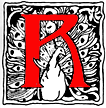 ossetti's poetry was, much more often than not, love poetry, but it was rarely, if ever, only about love — love itself is a metaphor for the condition of desiring. Whatever autobiographical elements may be found in Rossetti's poetry, the love he described is never simply the love of Gabriel Rossetti for Lizzie Siddal, or for Fanny Cornforth, or for Jane Morris; rather it is, like the love Shelley described, a love for an ideal of perfection. The distinction between ideal love and actual love has not always been clear to Rossetti's readers. The House of Life, for example, has been frequently described as a House of Love, but it has also been described as an elegy. Both descriptions are tight, but the more perceptive interpretation, which recognizes the metaphoric significance of love, places the poem in the tradition of In Memoriam, a poem that seeks answers to the weighty Victorian questions about the meaning of life and death in a world rapidly losing its traditional assumptions and values. Both poems are diminished, without faith, though In Memoriam ends optimistically after the mystical experience of section 95; the very form of both poems, a series of lyrics, indicates the refusal of the poets to attempt sustained discourse on high topics. Kathleen Coburn had said that Coleridge never achieved the poetic or philosophical goal that he sought through a metaphysical system, but reached it only by occasional brillaint apercus; Tennyson and Rossetti, in their greatest poems, were willing to content themselves with the apercus, without striving for a coherent system. But The House of Life is more limited in scope and range than In Memoriam. Though love is a metaphor for larger concerns , it is an obsessive one — in this sense The House of Life does remain a House of Love.
ossetti's poetry was, much more often than not, love poetry, but it was rarely, if ever, only about love — love itself is a metaphor for the condition of desiring. Whatever autobiographical elements may be found in Rossetti's poetry, the love he described is never simply the love of Gabriel Rossetti for Lizzie Siddal, or for Fanny Cornforth, or for Jane Morris; rather it is, like the love Shelley described, a love for an ideal of perfection. The distinction between ideal love and actual love has not always been clear to Rossetti's readers. The House of Life, for example, has been frequently described as a House of Love, but it has also been described as an elegy. Both descriptions are tight, but the more perceptive interpretation, which recognizes the metaphoric significance of love, places the poem in the tradition of In Memoriam, a poem that seeks answers to the weighty Victorian questions about the meaning of life and death in a world rapidly losing its traditional assumptions and values. Both poems are diminished, without faith, though In Memoriam ends optimistically after the mystical experience of section 95; the very form of both poems, a series of lyrics, indicates the refusal of the poets to attempt sustained discourse on high topics. Kathleen Coburn had said that Coleridge never achieved the poetic or philosophical goal that he sought through a metaphysical system, but reached it only by occasional brillaint apercus; Tennyson and Rossetti, in their greatest poems, were willing to content themselves with the apercus, without striving for a coherent system. But The House of Life is more limited in scope and range than In Memoriam. Though love is a metaphor for larger concerns , it is an obsessive one — in this sense The House of Life does remain a House of Love.
Riede, David G. Dante Gabriel Rossetti and the Limits of Victorian Vision. Ithaca: Cornell University Press, 1983. 128-29.
Last modified 12 March 2007